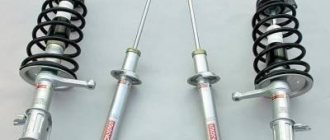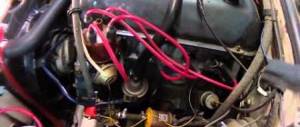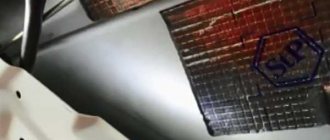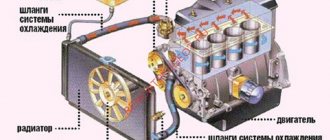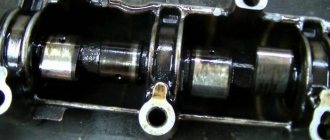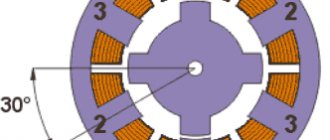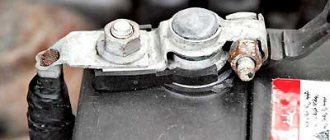| Number of cylinders: | 4 |
| Cylinder displacement, l: | 1,597 |
| Compression ratio: | 11 |
| Rated power at a crankshaft speed of 5600 rpm: | 72 kW.-(98 hp) |
| Cylinder diameter, mm: | 82 |
| Piston stroke, mm: | 75,6 |
| Number of valves: | 16 |
| Minimum crankshaft speed, rpm: | 800-850 |
| Maximum torque at 4000 rpm, N*m: | 145 |
| Cylinder operating order: | 1-3-4-2 |
| Octane number of gasoline: | 95 (unleaded) |
| Fuel supply system: | Electronically controlled distributed injection |
| Spark plug: | AU17DVRM, BCPR6ES(NGK) |
| Weight, kg: | 115 |
Engine features, review
The VAZ 21126 engine can be used for installation on a VAZ 2170 “Lada Priora” car and its modifications.
It was developed simultaneously with the internal combustion engine of the VAZ 11194. Despite the different displacement of these models, most of the engine components and systems are the same. One of the main tasks when creating these engines was to achieve a significant increase in the service life of the main components. The internal combustion engine of the VAZ 21124 was taken as the basis. The use of new technologies and design solutions allowed the manufacturer to increase the service life of the engine. (See “Cylinder block”)
The cylinder diameter of the VAZ 21126 engine is 82 mm. The block height is 197.1 mm (distance from the axis of rotation of the crankshaft to the upper plane of the cylinder block). Structurally, it is no different from block 11193-1002011, used on the VAZ 21124 engine. The main difference between the VAZ 21126 block is the quality of the cylinder wall processing and the increased height of the block. Cylinder honing is carried out using Federal Mogul technology, which ensures better working surfaces. The block received a new index - 21126-1002011. To avoid confusion, the block has the appropriate markings and is painted gray. For the cylinder diameters of block 21126, three classes of sizes are defined in increments of 0.01 mm (A, B, C). The cylinder class marking is made on the bottom plane of the block.
The engine uses crankshaft model 11183-1005016. In terms of mounting dimensions, the shaft corresponds to the VAZ 2112 shaft. But the 11183 crankshaft has an increased crank radius - 37.8 mm, and the piston stroke - 75.6 mm. To distinguish it, there is a marking on the cheek of the counterweight - model “11183” is indicated. The crankshaft toothed pulley is original and has the index 21126. The profile of the pulley teeth is designed for a timing belt with a semicircular tooth. To prevent the belt from slipping, the pulley has a flange (belt) on one side and a special washer is installed on the other side. A model 2112 damper is installed on the shaft to drive the generator and attachments. The crankshaft damper (pulley) is combined with a drive gear disk. The toothed disc allows the sensor to track the position of the crankshaft.
To drive the generator (and power steering pump), a poly V-belt 2110-1041020 – 6РК1115(1115mm) is used. On engines without an installed power steering pump, a belt 2110-3701720 - 6RK742 (742mm) is used. If an air conditioner is installed on the car, then a belt 2110-8114096 - 6РК1125(1125mm) is used to drive these units.
The development of the connecting rod and piston group was carried out by Federal Mogul. A new lightweight design was developed. The weight of the piston-rod-pin set has been reduced by more than 30% compared to the 2110 set.
The nominal piston diameter is 82mm. The piston height has decreased. The use of thinner piston rings manufactured by Federal Mogul is provided. There are four shallow holes on the bottom of the piston. The hole for the connecting rod pin is offset from the piston axis by 0.5 mm. The diameter of the hole for the piston pin is 18mm. The pin is secured in the piston with retaining rings. The upper head of the connecting rod is installed in the piston with minimal clearance. This clearance guarantees minimal axial displacement of the connecting rod with the piston along the crankpin of the crankshaft.
The connecting rod is made thinner and the sides of the lower end of the connecting rod do not have contact with the crankshaft. This design made it possible to significantly reduce friction losses. When installing, the accuracy classes of the pistons must correspond to the classes of the block cylinders. The class marking is located on the bottom of the piston.
The 11194 connecting rod has a lightweight, extended design and is manufactured using new technology. The connecting rod length is 133.32mm. The connecting rod cap is made by breaking part of the connecting rod blank. The combination of surfaces obtained in this way allows, by joint processing of two parts of the connecting rod, to achieve high accuracy for the hole for the connecting rod journal of the shaft. New design bolts are used to secure the connecting rod cover. Bolts must not be reused after disassembling the connecting rod. For the new connecting rod, new connecting rod bearings with a width of 17.2 mm are used.
Piston rings are 82mm. The rings installed on the new pistons are “thinner” in comparison with traditional VAZ ones. Ring height: 1.2mm – upper compression, 1.5mm – lower compression, 2mm – oil scraper.
The outer diameter of the piston pin 21126 is 18 mm, length is 53 mm.
The cylinder head 21126-1003011 is sixteen-valve and differs from the mod. 2112 with an enlarged platform on the front surface of the head to accommodate a new timing belt tensioning mechanism. The area of the exhaust pipeline flanges has been increased. The spark plug well glasses are cast integrally with the head.
Camshafts, valves, springs and hydraulic tappets remain from the 2112 engine.
Hydraulic valve tappets automatically compensate for gaps in the valve drive, which makes it possible not to adjust the gaps in the valve mechanism during operation.
The engine uses a new automatic timing belt tensioning mechanism with rollers of a new design. By switching to a Gates timing belt with a new profile, the engine uses new camshaft pulleys, a water pump pulley and a crankshaft pulley. The pulley profile corresponds to a timing belt with a semicircular tooth.
Gates timing belt 76137 x 22 mm (137 semicircular teeth). Width 22 mm. For a timing belt, the manufacturer has determined a resource of 200 thousand km.
To drive the camshafts, original toothed pulleys are used. The pulleys are marked with a circle-shaped mark. On the intake pulleys, one circle is applied to the left of the alignment mark near the teeth. The exhaust pulley is marked with two circles to the left and right of the installation mark, near the teeth.
A special two-layer metal cylinder head gasket with a thickness of 0.45 mm (21126-1003020) and with holes for cylinders with a diameter of 82 mm is used.
A new cat collector design (11194-1203008) is installed on the engine. Compared to engine 21124, the diameter of the converter has been increased. For modification designed to meet Euro 3 toxicity standards, installation of a catalytic collector model 11194-1203008-10(11) is required. The catcollector model 11194-1203008-00(01) ensures compliance with Euro-4 standards.
New design water pump (211261307010). The toothed pulley has been changed. In order to increase the service life, a new bearing and oil seal have been used on the pump.
The elements of the ignition system of the VAZ 21126 engine correspond to the ignition used on the VAZ 21124 and VAZ 11194 engines. All of these options have individual ignition coils installed for each spark plug.
VAZ 21126 and VAZ 11194 engines have identical fuel systems. Fuel rail 1119-1144010, made of stainless steel. It is possible to install “BOSCH” 0280 158 022 or “SIEMENS” VAZ20734 injectors (thin, blue) on this ramp. Fuel is supplied to the cylinders in a phased manner.
For the electronic engine control system, a controller M 7.9.7 or JANUARY 7.2 is installed.
Where is the first cylinder of engine 21126?
Cylinder numbering is carried out on the installation side of the crankshaft pulley.
21126 what injectors?
Injectors “BOSCH” 0280 158 022 or “SIEMENS” VAZ20734.
About Lada Priora engines 1st generation (2007 - present)
Lada Priora, AvtoVAZ's line of cars, represented by the VAZ 2170 sedan, VAZ 2171 station wagon and VAZ 2172 hatchback. Priora appeared on the market in 2007 and became a replacement for the VAZ 2110 car. The station wagon model became a replacement for the VAZ 2111, and the popular hatchback replaced the VAZ 2112. The rare 2112 coupe was replaced by the even rarer Priora Coupe.
The basis of the Priora was the Lada 110, changing the design of the exterior and interior, and partially modifying the technical component. Since 2015, the Lada Priora has been replaced by the Lada Vesta. Since the beginning of production, various engines have been installed on the Priora. It is the engines that were installed on the Lada Priora that we will consider in this article, and we will also touch upon their shortcomings.
ENGINE VAZ 21116/11186
The 21116 engine is, in fact, a modified 21114 1.6 liter power unit. The VAZ21116 engine differs from the VAZ 21114 power unit, which is a lighter ShPG produced by Federal Mogul. The engine has a cylinder block similar to the cylinder block of the VAZ 21126. Among the positive aspects of the engine, one can note a reduction in noise and fuel consumption. The engine is also characterized by increased environmental friendliness and power.
The engine has a timing belt drive. Engine VAZ 21116 1.6 l. is an in-line injection engine, it has four cylinders and an overhead camshaft.
ENGINE DISADVANTAGES
In terms of engine malfunctions and weaknesses, the following are noted. The engine is noisy and knocking. In addition, the engine can triple. If the timing belt breaks, the engine may bend the valves. In addition, in practice, the engine life is lower than what is officially declared.
ENGINE VAZ21126
The 21126 engine is a continuation of the VAZ 21124 power unit, which has a 39% lighter ShPG from Federal Mogul. This is an engine with reduced valve holes and a timing belt with an automatic tensioner. Due to this, the problem of timely belt tension disappeared. In terms of the block, we have higher quality surface treatment and high requirements for honing cylinders to Federal Mogul standards.
VAZ 21126 1.6 l. It is an in-line injection engine, it has four cylinders and overhead camshafts. In general, the engine is considered quite good, especially for the city.
ENGINE DISADVANTAGES
Owners note uneven operation and loss of engine power. In addition, the timing belt is not particularly reliable. Uneven operation of the engine can be caused by problems with fuel pressure, timing problems, faulty sensors, air leaks through hoses, or a malfunction of the throttle valve. In case of loss of power, the reason must be sought in low cylinder compression, wear of cylinders, piston rings, and burnout of pistons. If the timing belt breaks, the engine may bend the valves. The problem is solved by replacing the standard pistons with weldless ones.
ENGINE VAZ 21127
Engine VAZ 21127 1.6 l. 106 hp can be called a relatively new VAZ engine. It is a continuation of the Priora engine 21126 and is based on the same block 21083 with some modifications. This is an in-line engine, injection type, the engine has four cylinders, and overhead camshafts. The timing drive uses a belt. A specific feature of the VAZ 21127 engine is the presence of an intake system with a resonance chamber, the volume of which can be adjusted using dampers designed for this purpose.
ENGINE DISADVANTAGES Engine 21127 bends the valves when the timing belt breaks. In addition, the engine is noisy, knocking, and knocking. Owners note uneven operation and loss of engine power. In addition, the timing belt is not particularly reliable. Uneven operation of the engine can be caused by problems with fuel pressure, timing problems, faulty sensors, air leaks through hoses, or a malfunction of the throttle valve. In case of loss of power, the reason must be sought in low cylinder compression, wear of cylinders, piston rings, and burnout of pistons.
ENGINE VAZ 21128
Initially, the 128 engine was created on the basis of the VAZ 21124 power unit. Unlike the last, the VAZ 21128 received cylinders bored out by 0.5 mm, a crankshaft with a stroke of 84 mm, a connecting rod of 129 mm, and lightweight pistons. The timing drive uses a belt, and if it breaks, the engine tears the valves. The cylinder head is similar to the 124 engine, the combustion chambers are slightly modified.
Engine VAZ 21128 1.8 l. It is in-line, injection type, has four cylinders and overhead camshafts.
ENGINE DISADVANTAGES
The main complaint about the engine can be called the low practical resource noted by users. In addition, the engine is subject to significant wear. The engine is quite thirsty for oil. The VAZ 21128 engine quite quickly reaches a state in which it requires major repairs. In addition, the engine is characterized by shaking, knocking and noise during operation. The engine is also susceptible to overheating. And in general, owner reviews about this engine are negative.
| Engine | VAZ 21116/11186 | VAZ 21126 | VAZ 21127 | VAZ 21128 |
| Years of manufacture | 2011 - present day | 2007 - present day | 2013 - present day | 2003 - present day |
| Cylinder block material | cast iron | cast iron | cast iron | cast iron |
| Supply system | injector | injector | injector | injector |
| Type | in-line | in-line | in-line | in-line |
| Number of cylinders | 4 | 4 | 4 | 4 |
| Valves per cylinder | 2 | 4 | 4 | 4 |
| Piston stroke | 75.6 mm | 75.6 mm | 75.6 mm | 84 mm |
| Cylinder diameter | 82 mm | 82 mm | 82 mm | 82.5 mm (82 mm since 2014) |
| Compression ratio | 10,5 | 11 | 11 | 10,5 |
| Engine capacity | 1596 cm cube | 1597 cm cube | 1596 cm cube | 1796 cm cube (1774 cm cube since 2014) |
| Power | 87 hp /5100 rpm | 98 hp /5600 rpm | 106 hp /5800 rpm | 98 hp /5200 rpm (123 hp/5500 rpm) |
| Torque | 140Nm/3800 rpm | 145Nm/4000 rpm | 148Nm/4000 rpm | 162Nm/3200 rpm (165 Nm/4000 rpm) |
| Fuel | AI95 | AI95 | AI95 | AI95 |
| Fuel consumption | ||||
| city | 8.5 l/100 km | 9.8 l/100 km | — | 9.8 l/100 km |
| track | 5.7 l/100 km | 5.4 l/100 km | — | 5.4 l/100 km |
| mixed | 7.2 l/100 km | 7.2 l/100 km | 7 l/100 km | 7.5 l/100 km |
| Oil consumption | 50 g/1000 km | 50 g/1000 km | 50 g/1000 km | about 300 g/1000 km |
| Oil type | 5W-30 5W-40 10W-40 15W40 | 5W-30 5W-40 10W-40 15W40 | 5W-30 5W-40 10W-40 15W40 | 5W-30 5W-40 10W-40 15W40 |
| How much oil is in the engine | 3.5 l | 3.5 l | 3.5 l | 3.5 l |
| When replacing, pour | 3.2 l | 3.2 l | 3.2 l | 3.2 l |
| Resource | ||||
| according to the plant | 200 thousand km | 200 thousand km | 200 thousand km | 200 thousand km |
| on practice | — | 200 thousand km | 200 thousand km | — |
| Tuning | ||||
| potential | 180+ hp | 400+ hp | 400+ hp | 400+ hp |
| without loss of resource | up to 120 hp | up to 120 hp | up to 120 hp | up to 120 hp |
| The engine was installed | Lada Granta Lada Kalina 2 Lada Priora | Lada Priora Lada Kalina Lada Granta Lada Kalina 2 VAZ 2114 Super Auto (211440-26) | Lada Priora Lada Kalina 2 Lada Granta | Lada Priora 1.8 VAZ 21124-28 Lada 112 Coupe 1.8 VAZ 21104-28 |
- With diplomatic support. Premiere of the new generation Škoda Octavia
See all photo news >>
Where is the number on Priora
For all VAZ cars, the number can be located on the mudguard of the front right fender. The duplicate is located in the lower part of the body. It is also possible to place it in the cabin near the driver's seat. It depends on the model. The placement on newer brands is different from older models. The number contains the following indicators:
- trunk numbering;
- motor;
- the greatest weight when the car is moving;
- trailer weight resolution;
- maximum load on the rear and front axles;
- type of marking;
- code;
- code for additional spare parts.
Prior valve diameter 16 valves
*—parameters and dimensions of products from other manufacturers may differ from those indicated.
For the VAZ 21126 engine, a new design of the connecting rod and piston group was developed. Specialists from the company Nural (Nural), part of the Federal Mogul corporation, took part in the development of the piston engine. For the first time for a VAZ engine, a new T-shaped piston design was chosen. The bottom shape is flat with 4 small recesses.
Due to the use of “thin” piston rings, it was possible to reduce the height of the sealing and fire belt. The use of oil nozzles in the engine to supply oil to the inner surface of the piston ensured a significant reduction in the thermal load on this part. The piston uses a shortened piston pin of the “floating” type, secured with retaining rings and with a diameter of 18 mm. This made it possible, in the piston design, to remove a significant amount of metal in the area of the bosses, thereby increasing the size of the “refrigerator” and reducing the guide sections of the piston skirt. Excess oil is drained into the “refrigerator” area through holes made in the groove for the oil scraper ring. Piston 21126 is manufactured by stamping (forging) and does not have temperature-compensating elements. Reducing the weight of the connecting rod and piston group had a positive effect on improving the dynamic characteristics of the engine.
Basic markings applied to the bottom of the part.
1. Orientation marker - “ ” when installed, should indicate the direction towards the camshaft drive
2. Class marker - one of the symbols (“A”, “B”, “C”) determines the deviation in the outer diameter.
3. Marker model “21126”
4. Model marker, according to the manufacturer's classification.
Main Dimensions
| Piston class by outer diameter | A | B | C |
| Piston diameter 82.0 (mm) | 81,965-81,975 | 81,985-81,995 | 82,005-82,015 |
The precision manufacturing of the hole for the piston pin ensures a gap of 0.001-0.002 mm and allows the use of a pin of the same size (17.990-17.995 mm).
A number of third-party manufacturers sell pistons in repair sizes - 82.5 mm and 83.0 mm.
The VAZ 2112 engine is a four-cylinder, four-stroke, with four valves per cylinder, two camshafts and distributed (phased) fuel injection. The VAZ 2112 engine is developed on the basis of the VAZ 2110 car engine, but has many modified or original parts, which is primarily due to the installation of a 16-valve head and a drive of two camshafts on the VAZ 2112 car engine, as well as a different air supply system to the cylinders .
The fuel mixture intake and exhaust valves are located in the valve compartment of the cylinder head obliquely in a row. The position of the valves is determined by the camshaft cam mechanism.
The kit includes:
Inlet valve: 2112-1007010-86 – 8 pcs.;
Exhaust valve: 2112-1007012-86 – 8 pcs.
The inlet valve is designed to admit the fuel-air mixture into the combustion chamber. The valves fit snugly into the seat on the cylinder head and ensure tight closure of the combustion chamber. When the camshaft cam mechanism rotates, the cam presses on the rocker arm, which in turn moves the valve.
The exhaust valve is designed to release exhaust gases from the combustion chamber of the fuel-air mixture. The valves fit snugly into the seat on the cylinder head and ensure tight closure of the combustion chamber. When the camshaft cam mechanism rotates, the cam presses on the rocker arm, which in turn moves the valve.
1 — generator drive pulley (damper) VAZ 2112; 2 — oil pump VAZ 2112; 3 — toothed pulley of the VAZ 2112 coolant pump; 4 — timing belt; 5 - tension roller; 6 — front cover of the timing mechanism drive; 7 — piston pin VAZ 2112; 8 — camshaft toothed pulley; 9 — camshaft oil seal VAZ 2112; 10 — rear cover of the camshaft drive; 11 — cylinder head cover of VAZ 2112; 12 – exhaust camshaft; 13 — camshaft bearing cover VAZ 2112; 14 - receiver; 15 — guide pipe; 16 — oil filler cap; 17- hydraulic pusher VAZ 2112; 18 — valve spring; 19- valve VAZ 2112; 20 — outlet pipe of the cooling jacket; 21 — cylinder head VAZ 2112; 22 — cylinder block; 23 — piston VAZ 2112; 24 — flywheel VAZ 2112; 25 — connecting rod; 26 — holder of the rear boot of the crankshaft; 27 - crankshaft; 28 — rear crankshaft oil seal; 29 — main bearing cover; 30 — connecting rod cover; 31 — oil pan; 32 — oil pump receiver; 33 — front crankshaft oil seal; 34 — crankshaft toothed pulley; 35 — oil pan drain plug; 36 — oil filter VAZ 2112; 37 — coolant pump; 38 — exhaust manifold; 39 — exhaust valve; 40 — intake camshaft VAZ 2112; 41 — nozzle VAZ 2112; 42 — intake manifold; 43 — valve guide; 44 - inlet valve.
Lada Priora
There is a ski hatch in the back of the rear seat.
There is a ski hatch in the back of the rear seat
With a mileage of 45 thousand km, you need to check and adjust the tension of the timing belt - both on an 8-valve engine and on a 16-valve engine. But the plant does not regulate its replacement on a 16-valve engine. Therefore, changes have to be made based on diagnostic results. It should be remembered that a broken timing belt leads to a major overhaul of the engine. It is clear that diagnosis requires the closest attention.
